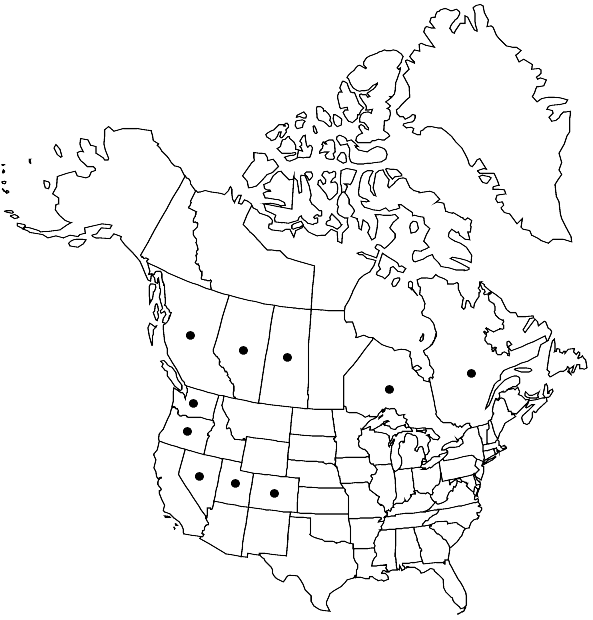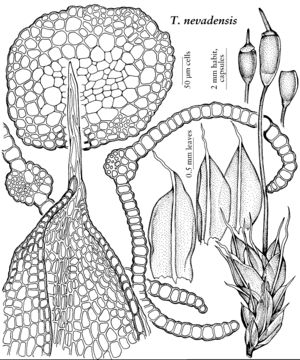Tortula nevadensis
Bull. Buffalo Soc. Nat. Sci. 32: 226. 1993,.
Leaves ovate to obovate or elliptical, apex acute, short-awned, sometimes long, margins plane or rarely weakly recurved medially, not bordered; costa long-excurrent, lacking an adaxial pad of cells, distally narrow, 2–3 cells across adaxial surface; distal laminal cells subquadrate or occasionally hexagonal, 16–22 µm wide, 1(–2):1, smooth. Sexual condition autoicous. Sporophytes exerted. Seta 1–1.4 cm. Capsule stegocarpic, not systylius (but columella falls with operculum), obovate to cylindric, erect and nearly straight, urn 0.8–1.6 mm; peristome absent; operculum 0.6–1 mm. Spores 23–30 µm, spheric, granulose-papillose papillose.
Phenology: Capsules mature spring–summer.
Habitat: Soil, occasional saline soil, clay
Elevation: moderate to high elevations (500-3900 m)
Distribution

Alta., B.C., Ont., Que., Sask., Colo., Nev., Oreg., Utah, Wash.
Discussion
In Tortula nevadensis, the often long-cylindric capsule with operculum rostrate from a flattened base is much like that of Hennediella heimii but is not technically systylius because the operculum usually falls without being lifted by the columella; the columella is cut near the base and remains attached to the operculum. The leaves are reddish only in the extreme basal portion in 2 percent KOH solution. The costa seen in section has two (sub)stereid bands in the more robust leaves, but the large, smooth laminal cells and broad leaf shape preclude confusion with taxa in genera characteristically having two stereid bands (but only one band if plant environmentally depauperate). What appears to be a ventral stereid band may be secondary thickening of an internal epidermal layer. The distal leaves may be weakly denticulate near the apex by projecting cell ends. This uncommon species is a western North American one that is disjunctive to Ontario and Quebec.
Selected References
None.
